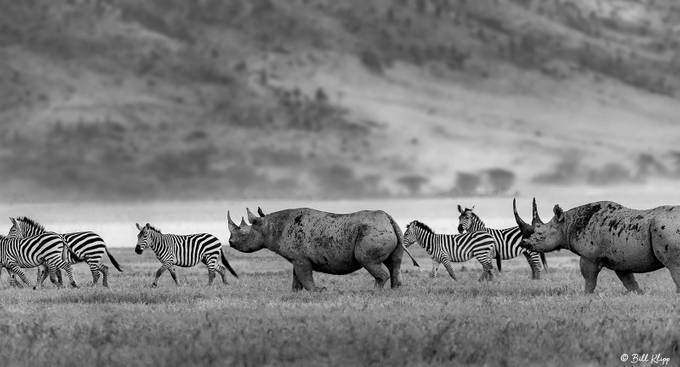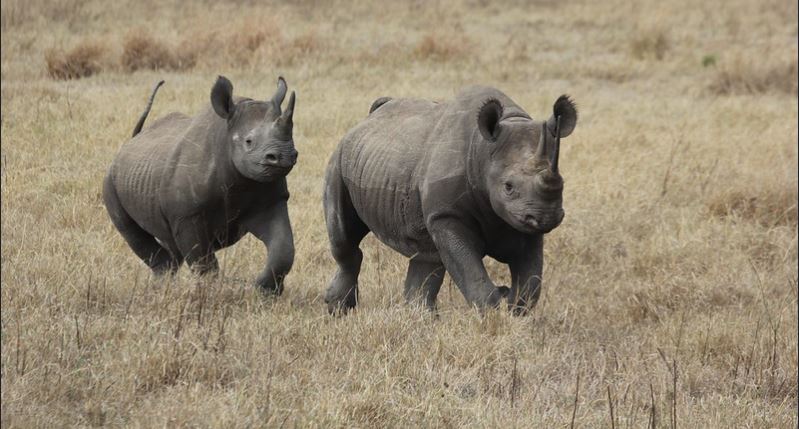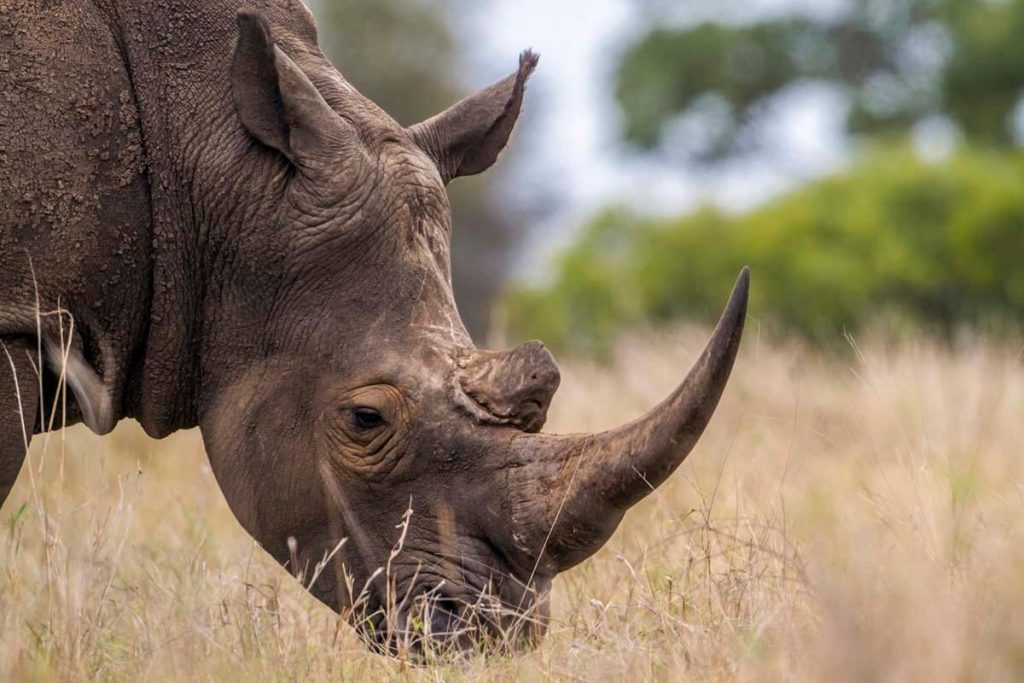Black rhinos in Ngorongoro crater

Black rhinos in Ngorongoro crater: Ngorongoro crater one of the perfect wildlife destinations in Tanzania and a UNESCO World Heritage site recognized because of its unique and the beautiful Ngorongoro crater, Ngorongoro crater is the main feature of Ngorongoro conservation area and the world’s largest unbroken volcanic caldera. Ngorongoro crater was formed as a result of an exploded volcano which happened about 2-3 million years ago, the crater is 2,000 ft deep and 260 square kilometers wide.

Ngorongoro conservation area where Ngorongoro crater is found is located in the northern region of Tanzania about 153 kilometers west of Arusha Town the safari capital of Tanzania.
Black rhinos are critically endangered wildlife species once found in most parts of the sub-Saharan Africa but currently near extinction due to extreme hunting, black rhinos are native species to Botswana, Kenya, Malawi, Mozambique, Namibia, Swaziland, Zambia, Zimbabwe, Uganda and Tanzania.
Rhinos belong to the family of Rhinocerotidae and they are of different sub-species with 3 subspecies are declared extinct by the International Union for Conservation of Nature (IUCN), rhinos are locally referred to as Kifaru in Swhaili language. The rhinos are categorized into to two that is black and white rhinos, regardless of the name they are both grey in color. Rhinos are classified basing on their lip shape and not in color, the white rhinos have square upper lip while the black rhinos have pointed or hooked lip. The difference in lip shape of the rhino is related to their diet, black rhinos are browsers feeding on trees , bushes and they use their lips to pluck leaves and fruits from tree branches. White rhinos graze on grass and they are noticed to walk with their heads and squared lips lowered to the ground.
Black rhinos boast two horns with the foremost horn more prominent than the other, the rhino’s horn grows to 3 inches a year and they been known to grow up to 5 feet long. The horns are very useful to the rhinos and they use of protection, the female rhinos use the horns to protect their young ones and males use them during battle backtrackers.
Black rhinos are smaller in size when compared the two African rhino species, black rhinos are in subspecies that are
Southern black rhinos
Southern black rhinos are Extinct black rhinos, before they became extinct they were once found in Cape of Good Hope, Transvaal, South Africa and South of Namibia.
North-eastern black rhinos
North-eastern black rhinos were formerly found in central Sudan, Eritrea, northern and southeastern Ethiopia, Djibouti and northern and southeastern Somalia.
Chobe black rhinos
Chobe black rhinos are local species of black rhinos restricted to Southeastern Angola in Chobe Valley, Zambezi region in Namibia and northern Botswana, the Chobe black rhinos are near extinction with only one rhino found in Botswana.
Uganda black rhinos
Uganda black rhinos are considered extinct species once found in south Sudan, Uganda, western Kenya and southwestern most Ethiopia.
Western black rhinos
Western black rhinos are extinct species black rhinos as declared by IUCN, these black rhinos were once found in south Sudan, northern central African republic, southern Chad, northern Cameroon, northeastern Nigeria and South-eastern Niger.
Eastern black rhinos
Eastern black rhinos were once distributed in south Sudan, Uganda, Ethiopia, Kenya and north-central Tanzania but currently limited to only Kenya and Tanzania.
South-central black rhinos
South-central black rhinos found in north-eastern South Africa, Malawi, Botswana, Zambia, north eastern Tanzania and South eastern Kenya. These type of black rhinos are characterized of proportionally large head and prominent skin folds.
South-western black rhinos
South-western black rhinos are original inhabitants of north-western Namibia and southwestern Angola, they adapted to surviving in the desert and semi desert conditions
Ngorongoro crater is one of the few areas to find the remaining population of black rhinos in Africa and Tanzania, according to statistics Ngorongoro crater hosted a recorded population 100 black rhinos in 1965 and in 1980s the number reduced due to poaching. However due to maximum protection measures employed by the Tanzania National Parks Authority (TANAPA), the number of black rhinos in Ngorongoro crater has gradually increased to 26 black rhino individuals present in Ngorongoro crater.
Black rhinos in Ngorongoro conservation area live in most regions of the crater and a regularly seen in the region east of Leria Forest specifically in the area between Lerai and Gorigor Swamp, the black rhinos spend the night in the Lerai forest and in the morning they scatter to other regions of the crater. The best way to get excellent sights of black rhinos in Ngorongoro conservation area is on an early morning game drive before they scatter off to feed.
Black rhinos are critically endangered animal species and they have been poached near to extinction, the extreme poaching of black rhinos is due to high commercial demand for its horn on the international market. The rhino’s horn is very valuable in North Africa and Middle East as it used in the making of ornamental dagger handle, the rhino’s horn is also used for medicinal purposes in china, Taiwan, Hong Kong and Singapore and in Asia they are used as aphrodisiacs.

Where to see black rhinos in Ngorongoro crater
Black rhinos in Ngorongoro crater/ Ngorongoro conservation area live and easily spotted in the area between Lerai forest and Gorigor swamp
Lerai forest
Gorigor Swamp
How to get to Ngorongoro crater
Where to stay in Ngorongoro crater


